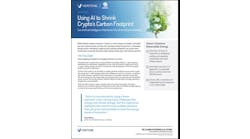US energy researchers and a group of energy, public policy and labor interests in Puerto Rico last week issued a plan to put the island on a path towards 100 percent renewable energy.
With power costs at 23 cents/kWh, it makes economic sense to develop generation that’s not subject to fossil fuel price volatility and long power outages, according to Cathy Kunkel, an energy analyst at the Institute for Energy Economics and Financial Analysts (IEEFA), who co-authored the report, “Queremos Sol (We Want Sun),” that outlines the plan.
“The reliability and resiliency benefits, especially for remote communities and critical loads, are obvious after Hurricane Maria when the months of delay in restoring power cost lives,” Kunkel told Microgrid Knowledge.
However, IEEFA and renewable energy advocates face a stiff challenge from vested energy interests, according to Kunkel. Backed by natural gas industry players, the state-owned utility PREPA (Puerto Rico Electric Power Authority) wants to make Puerto Rico a hub for regional liquefied natural gas (LNG) transportation and distribution. Kunkel says this would lock the island territory into long-term reliance on natural gas imports for electricity generation.
Steps to 100 percent renewables in Puerto Rico
IEEFA’s plan for Puerto Rico mirrors California’s recently enacted SB 100, which sets a target to make California’s electricity sector carbon-free by 2045. The “We Want Sun” report calls for Puerto Rico to secure 100 percent renewable energy by 2050 with an interim goal of 50 percent by 2035. The US territory would pursue the goal with:
- Efficiency, conservation and demand management
- Distributed renewable generation with storage, emphasizing rooftop solar
- Accelerated elimination of fossil fuels
The report recommends laying the foundation through several initiatives, including changes in use of debt by PREPA, creation of diverse financing sources, and strengthening the Puerto Rico Energy Commission (now the Energy Bureau).
Kunkel cited several examples of decentralization already underway as industry participants work to hammer out a new institutional framework to govern power and energy in Puerto Rico.
Solicitations in the works
“One of the more noteworthy projects is an effort by the municipality of Villalba to create a municipal power system based on a local hydropower resource to self-supply itself and five neighboring municipalities. They plan to issue an RFP [request for proposals] in the next couple months and expect the project to come in at $300-$400 million” Kunkel said.
The municipality of Maunabo appears to be creating its own local power system as well, though it is not as far along, Kunkel noted.
In addition, Sunrun installed community solar-storage microgrids at fire stations around the island after the hurricane. And the Puerto Rico Industrial Development Corporation has issued an RFP to build microgrids at five industrial parks.
How much does Puerto Rico pay for electricity?
Provided by IEEFA, Queremos Sol report
Non-profit, humanitarian relief and aid groups launched in Hurricane Maria’s wake, such as PRXPR, Resilient Power Puerto Rico and Para La Naturaleza, are installing community, solar-storage microgrids across the island as well.
Resilient Power Puerto Rico (RPPR) has completed 28 community solar-storage systems installations across the island in the last 11 months. Thirty-eight more are in the works, an RPPR spokesperson said in an interview.
In addition, sales of residential solar-storage systems are on the rise. Such systems will become the norm given the time it has taken to restore grid service, the fragility of PREPA’s power grid and a general lack of confidence in government authorities and PREPA, according to John Berger, CEO of Sunnova, one of the largest installer of residential solar on the island.
“The lack of reliability is a very big issue — the system continues to have large voltage and frequency issues, as well as blackouts,” he said in an interview.
Fortuitously, the falling cost of stationary battery energy storage is making solar-storage systems more affordable for island residents. “Every new Sunnova customer has battery storage, and we encourage that given the lack of grid service reliability,” Berger said.
Sunnova has invested some $150 million to develop its business in Puerto Rico. “We’re ramping up hiring and we continue to expand in Puerto Rico, including investing in local communities,” he added.
Paving the way for further advances, the Puerto Rico Senate passed a bill (PS 984) this summer that authorizes creation of energy cooperatives in Puerto Rico similar to rural electric cooperatives that exist elsewhere across the US, Kunkel pointed out. The Puerto Rico House of Representatives has yet to vote on the bill, however.
A threat to renewable microgrid projects?
However, Kunkel sees the move to privatize PREPA as a threat to future microgrids.
“If PREPA enters into new long-term contracts for natural gas infrastructure and power plants, it could easily find itself contracted for more capacity than it needs. This was part of the reason that the Puerto Rico Energy Commission didn’t authorize construction of a new natural gas import terminal last year. That raises questions about stranded costs and whether PREPA would seek to pass those costs on to customers who are trying to self-generate their own power,” Kunkel said.
IEEFA advised members of the Financial Management and Oversight Board of Puerto Rico against a rush to gas in September open letter. As Kunkel explained, the letter was sent shortly after news emerged that PREPA was in discussions regarding construction of new liquefied natural gas import terminals in San Juan, Mayaguez and Yabucoa, and new natural gas power plants at Cataño and Yabucoa, as well as the conversion of two, diesel-fueled generation units of the San Juan power plant to natural gas.
IEEFA and partners will be presenting the Queremos Sol report to Puerto Rico legislators later this month, Kunkel said.
Tracks news about the 100 percent renewable energy movement. Subscribe to the free Microgrid Knowledge newsletter.







